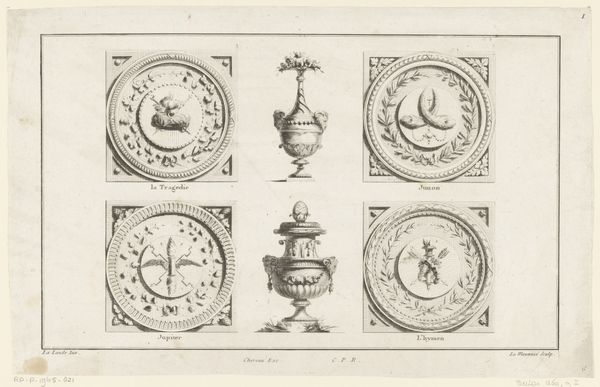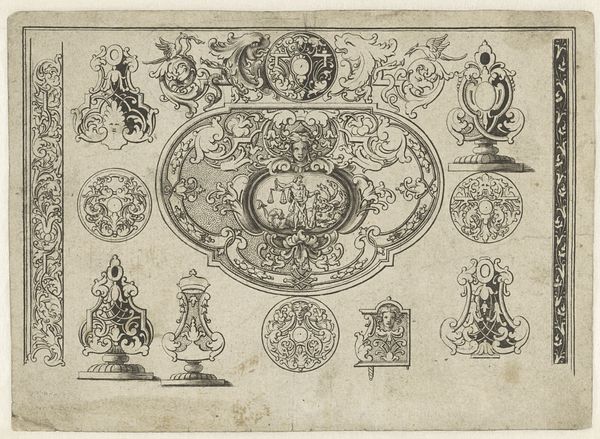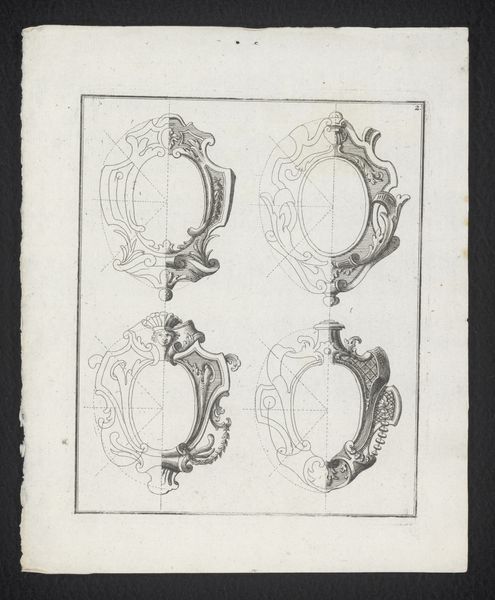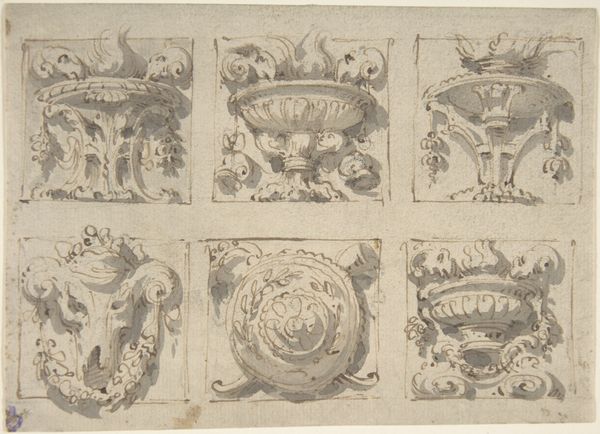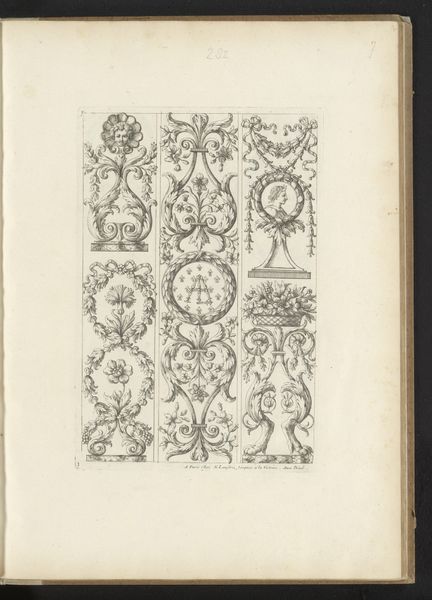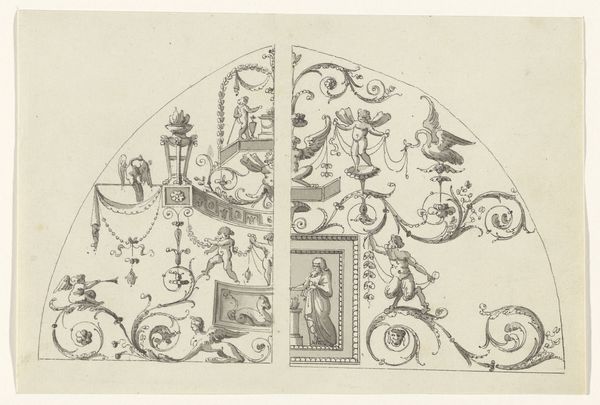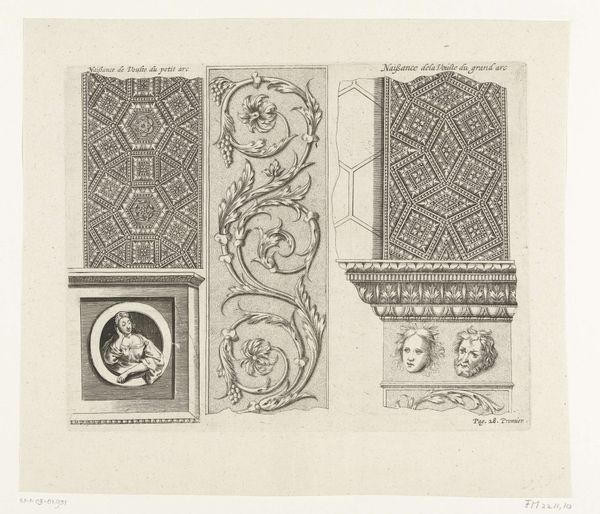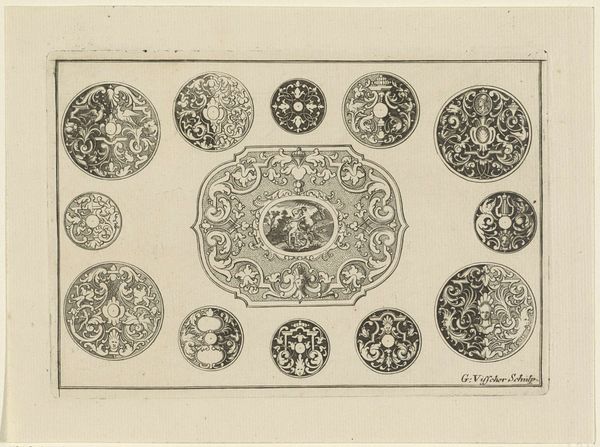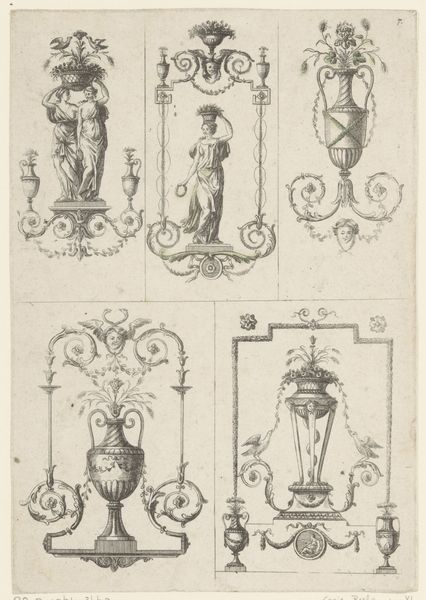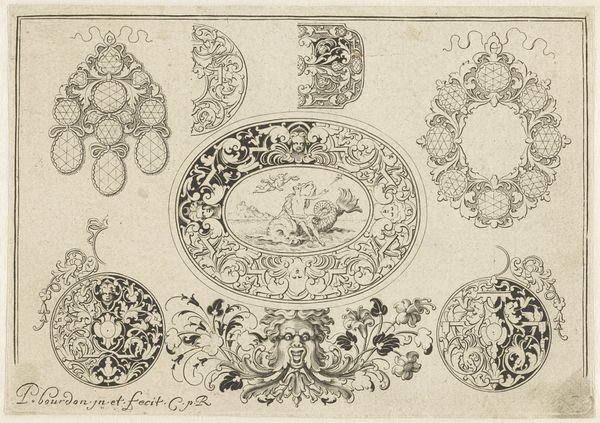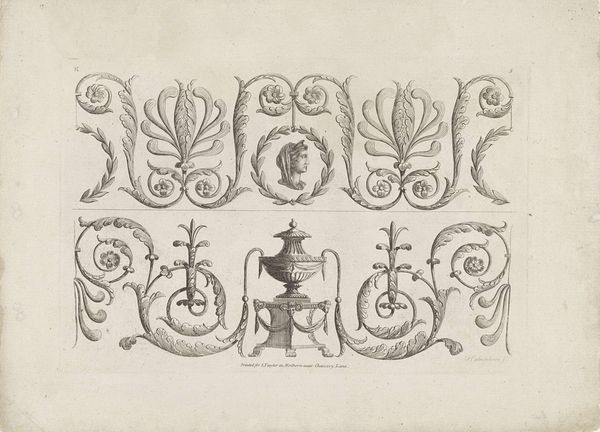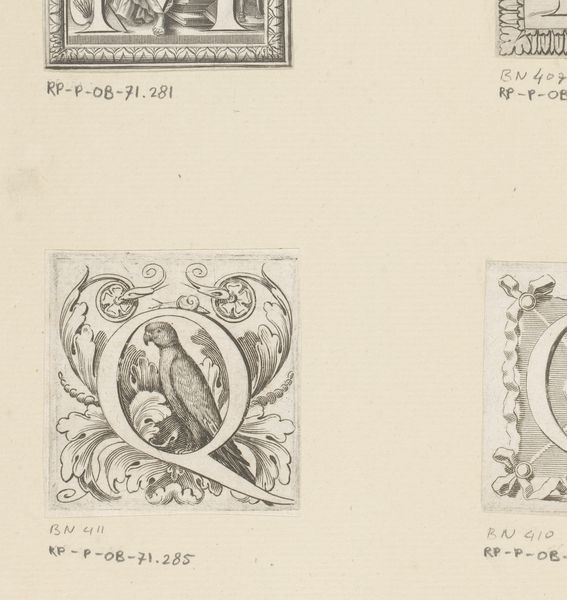
drawing, print, engraving
#
drawing
#
neoclacissism
# print
#
old engraving style
#
personal sketchbook
#
engraving
Dimensions: height 217 mm, width 345 mm
Copyright: Rijks Museum: Open Domain
Curator: Welcome. Before us is "Mercurius, Pan, Amor en Diana," a print by C. Le Meunnié, created between 1784 and 1785, currently held here at the Rijksmuseum. Editor: Well, the immediate impression is one of… restrained elegance? The precision and clarity, along with the muted tone, lend a certain air of coolness and classical grace. Curator: Indeed. The artist's hand reveals a dedication to neoclassicism, very à la mode at the time, particularly in the medium of engravings and drawings. Editor: One could almost view it as a decorative catalogue. It’s organized so meticulously, like templates for artisanal objects or maybe even architectural ornaments? The vases placed between the depictions of the gods, and how all elements are evenly distributed—very rational! Curator: You've grasped a core concept! These images aren’t merely artistic expressions; they are functional. Note how Mercurius, Pan, Amor, and Diana, and the two vases in between, are almost rendered as though seen in plan view and head on. Editor: And the symbolic language used for each god is so efficient, economical even. I love that it looks very like a collection from a personal sketchbook. There’s something very immediate about the rendering; very clean in presentation. Curator: Absolutely. Each motif is distilled to its essence. Take Diana, for example, whose emblem is reduced to a bow and crescent moon, emblems for this huntress and deity of the night. It invites us to explore their attributes beyond the well-known narratives. Editor: And the almost mathematical precision is captivating, particularly regarding each composition’s circular arrangements. What do you find most intriguing about the entire picture? Curator: Its accessibility, paradoxically! Le Meunnié gives us glimpses into 18th-century artistic process. It’s beautiful in its detail, sure, but also shows its process. That it presents all of the artistic elements to assemble for the objects it represents: gods as artful creation and artfulness for god-like creations! Editor: It makes one appreciate the skill and vision required to capture and transform the divine. Well, thanks to the Rijksmuseum, the past still speaks, doesn’t it?
Comments
No comments
Be the first to comment and join the conversation on the ultimate creative platform.
